Phase One Launches P 40+ with Sensor+![]()
Medium format camera quality plus hand-held flexibility in one system
COPENHAGEN, April 30, 2009 -- Phase One, the leader in open-platform based medium format camera systems and solutions, today announced immediate availability of the Phase One P40+ -- the company’s second Sensor+ enabled digital camera back/camera system.
Like the P 65+ introduced last year, this new system offers two separate image-capture modes. In normal mode, the P 40+ delivers full 40 megapixel captures for high-quality image details.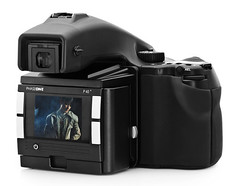 And when shooting conditions demand, a photographer can push a button and instantly switch from 40 megapixels to 10 megapixels, gaining a four-fold increase in light sensitivity (ISO to 3200), and a capture rate of up to 1.8 frames per second --an ideal performance for hand-held and/or low-light conditions.
And when shooting conditions demand, a photographer can push a button and instantly switch from 40 megapixels to 10 megapixels, gaining a four-fold increase in light sensitivity (ISO to 3200), and a capture rate of up to 1.8 frames per second --an ideal performance for hand-held and/or low-light conditions.
“Our second Sensor+ enabled system has been designed to deliver the fastest capture rate of any high-end medium format camera system on the market today,” said Jan H. Christiansen, marketing director for Phase One. “Our relentless innovation is inspired by the needs of quality-conscious professional photographers who seek flexible and reliable camera systems that can work as hard as they do.”
The versatility of the P 40+ system is important for those who seek quality medium format 16-bit capture under a variety of working conditions. Both modes feature a 12.5 f-stop dynamic range. From high-end wedding, fashion and fine-art photographers to photojournalists, the choice of capture modes in a single camera system frees photographers to focus on the job at hand rather than worry over equipment. Best results of Sensor+ technology are available by processing images using Phase One Capture One software version 4.8 or higher.
Technical specifications:
P 40+ full resolution capture mode:
Resolution: 40 megapixels
Pixel size: 6 x 6 micron
RAW file compression:
IIQ large: 40 MB
IIQ small: 26 MB
ISO: 50, 100, 200, 400, 800
Capture rate: Up to 1.2 frames per second
P 40+ Sensor+ capture mode:
Resolution: 10 megapixels
Pixel size: 12 x 12 micron
RAW file compression:
IIQ large: 10 MB
IIQ small: 7 MB
ISO: 200, 400, 800, 1600, 3200
Capture rate: up to 1.8 frames per second
Phase One P+ camera back mounts:
Phase One 645 AF, Mamiya 645AFDII/ AFDIII, Mamiya RZ67 PRO IID via adaptor, Hasselblad H1 and H2, Hasselblad 555ELD, 553ELX, 503CW and 501CM, Contax 645.
Wide angle & technical cameras: 4 x 5” via FlexAdaptor: Arca Swiss, Cambo, Linhof, Toyo, Sinar, Plaubel, Horseman.
Pricing & Availability
The P 40+ digital back starts at €14,990; the P 40+ camera system starts at €16,990.
All products are available now.
More information
For full technical specs, please read more here: www.phaseone.com/p40. For pricing and more information please contact a local Phase One dealer: http://www.phaseone.com/Content/ContactUs/LocateDealer.aspx
About Phase One
Phase One is a leading provider of digital image capture and work flow management technology. Phase One 645 Camera Systems and P+ digital backs open new possibilities, putting the focus back on the moment of capture. Phase One Capture One software helps streamline the capture and post-production process. Supporting DSLR, medium- and large format photographic equipment, Phase One products are renowned for their superior quality, flexibility and speed — enabling pro photographers to realize their most subtle and most complex visions without compromise.
Phase One is an employee-owned company based in Copenhagen with offices in New York, London, Tokyo, Cologne and Shanghai. For more information please, visit the Phase One web site on www.phaseone.com.
Phase One and Capture One are registered trademarks of Phase One A/S. All other brand or product names are trademarks or registered trademarks of their respective holders.
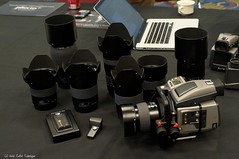
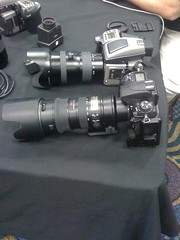
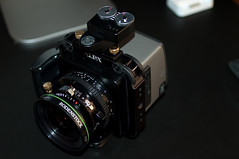

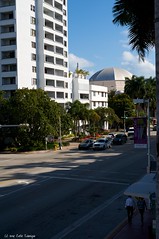
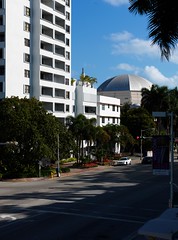

















 session with Leica at the PhotoPlus Expo in New York City. Leica will have the M8.2 and S2 available to try out. I will be taking extra memory cards to take some test images. Whether or not I will be able to post them online is another matter entirely.
The M8.2 is an update to the M8 Classic incorporating several features requested by die-hard M users. Quieter shutter, recocking delay, sapphire glass on the LCD, black paint finish, AutoISO, and a host of others. The M8.2 is available for pre-order from various authorized Leica dealers for $6,295 USD.
The S2 is an all-new system with a larger than 35mm sensor (it actually sits between a 35mm frame and a 645 frame at 37.5 megapixels) and boasts a set of new lenses expected to outperform anything else on the market. The S2 is expected to ship Spring 2009 and pricing has not yet been set.
session with Leica at the PhotoPlus Expo in New York City. Leica will have the M8.2 and S2 available to try out. I will be taking extra memory cards to take some test images. Whether or not I will be able to post them online is another matter entirely.
The M8.2 is an update to the M8 Classic incorporating several features requested by die-hard M users. Quieter shutter, recocking delay, sapphire glass on the LCD, black paint finish, AutoISO, and a host of others. The M8.2 is available for pre-order from various authorized Leica dealers for $6,295 USD.
The S2 is an all-new system with a larger than 35mm sensor (it actually sits between a 35mm frame and a 645 frame at 37.5 megapixels) and boasts a set of new lenses expected to outperform anything else on the market. The S2 is expected to ship Spring 2009 and pricing has not yet been set.
 How big will this camera be? Medium Format cameras are large and boxy due to their modular nature. Will this system be smaller than current MF offerings or will it be about the size of the old Mamiya 6?
This brings up an interesting point: There is another,
How big will this camera be? Medium Format cameras are large and boxy due to their modular nature. Will this system be smaller than current MF offerings or will it be about the size of the old Mamiya 6?
This brings up an interesting point: There is another, 





